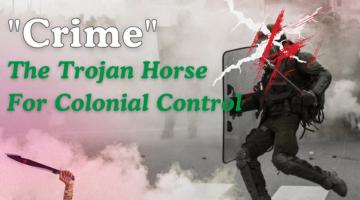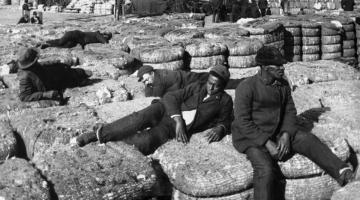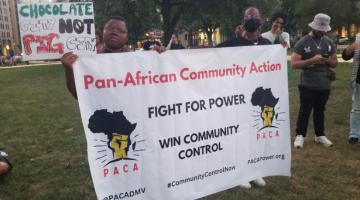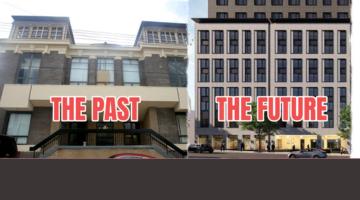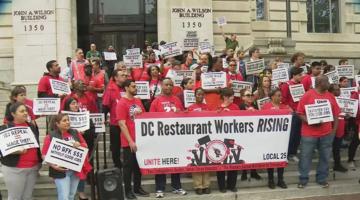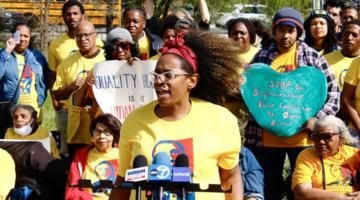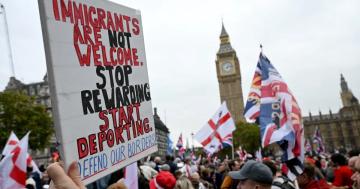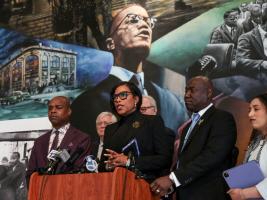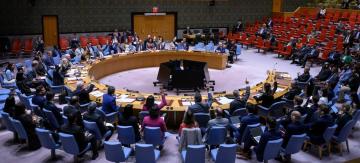Tim Watkins, photographed in the Watts neighborhood of Los Angeles in 2023, is combatting gentrification that has upended the community. Watts was two-thirds Black at the onset of the 1980s; today, it is now nearly 80% Latino. (Gary Coronado/Los Angeles T
America’s gentrified neighborhoods have lost 500,000 Black people, while gaining residents of every other race, a study finds.
Originally published in Capital B News.
Ignited by a single arrest and fueled by decades of poverty and police brutality, the Watts Uprising of 1965 turned the Los Angeles neighborhood into a national symbol of Black struggle and resilience. Thousands of Black residents like Ted Watkins Sr. rose up in anger and desperation. They were fighting for resources to maintain their neighborhood.
In the aftermath of the rebellion, Watkins founded the Watts Labor Community Action Committee to fight for continued investment in Black residents. Today, his son, Tim Watkins, is stuck in the same battles as president of the organization.
Watkins remembers jazz and gospel spilled from street corners, and murals of Black icons watched over bustling sidewalks. With his friends and family, he grew up listening to the melodic lines bellowing out of Central Avenue jazz clubs and the many Black flea markets that would pop up along the streets on weekends. But by the mid 1980s, those same streets started to tell a different story. Today, the murals of Black heroes have faded from walls, and Spanish-language signs now match the number of those in English. Sounds of cumbia ring louder than horn-laced jazz notes.
Often, these changes are framed as progress, yet for Black communities across America, erasure feels closer to the truth. Over the past 50 years, gentrification has swept through hundreds of majority-Black neighborhoods, propelled by policies and practices that favor developers and newcomers while longtime residents lose their footing. Once thriving centers of Black culture, business, and political power have been hollowed out as rents climb and home values surge.
A new nationwide study has put it into perspective.
No racial or ethnic group has experienced more negative impacts from gentrification than Black people, according to researchers from the National Community Reinvestment Coalition, a coalition of 700 nonprofit organizations focused on directing resources to America’s most vulnerable communities.
As hundreds of Black communities across the country have been gentrified since 1980, more than 500,000 Black people have been pushed from their homes. Those same neighborhoods have seen more than 3 million new Latino, Asian, and white residents, with cities like Atlanta, Washington, New York, and San Francisco witnessing entire neighborhoods transform within a single generation.
Perhaps no one has seen this more intimately than Tim Watkins. His Watts neighborhood, which was two-thirds Black at the onset of the 1980s, is now nearly 80% Latino. Over that same period, 92% of Los Angeles’ majority Black neighborhoods that experienced gentrification are no longer majority Black. That is a greater percentage of Black neighborhood loss than any other metro area in the nation. Washington is at a close second, losing 84% of its 55 majority Black areas since 1980.
“Sixty years later, we’re in the rearview mirror,” said Watkins, whose organization works to combat Black displacement through several housing, employment, and environmental initiatives.
“The war on poverty was implemented in a way that it became a war against poverty-stricken.”
And now, decades after first experiencing the mass displacement of Black residents, his neighborhood is changing again. Over the past decade, more than $1 billion of private and public money has flowed into properties in Watts. Luxury condos and trendy cafés have replaced longtime family businesses, while rent prices soar beyond what existing residents can afford. This transformation is driven by developers capitalizing on Watts’ prime location and cheap land values — turning what was once California’s most neglected neighborhood into a profitable investment opportunity that pushes out the very community it claims to help.
When gentrification enters a neighborhood, he said, “that typically means the powers [that] be are going to object to everything that currently makes a community colorful, including us.”
The study found that more than 500 majority-Black neighborhoods have been affected by gentrification over the past 50 years. Today, half of these neighborhoods are no longer Black. In comparison, roughly 80% of white neighborhoods that experienced gentrification remained white after the process.
In total, roughly 15% of urban U.S. neighborhoods have gentrified over the past 50 years. Gentrification most often has taken place near downtown areas, the study found, with the downtown areas in Washington, New York, Philadelphia, New Orleans, Atlanta, and the San Francisco Bay Area topping the list.
Washington witnessed the erasure of its legendary Sunday African drumming circles in Malcolm X Park, as the city’s transformation from “Chocolate City” into upscale cafés and restaurants catering to white newcomers displaced the artists and cultural keepers who had made the nation’s capital a hub of Black creativity and political power.
Atlanta’s Old Fourth Ward experienced such dramatic racial upheaval that it flipped from majority-Black to majority-white after the Eastside Trail of the Beltline opened in 2012, with gleaming apartment complexes rising on formerly vacant industrial land. More than 20,000 Black residents were displaced from neighborhoods that had anchored generations of families.
In New York’s gentrifying neighborhoods like Harlem and Brooklyn, the informal networks of community connection where neighbors once acknowledged each other on the street and gathered for impromptu block parties with music have been fractured as newcomers who don’t understand existing cultural norms increasingly call 311 to complain about the expressions of Black and Afro-Latino culture that defined these spaces for decades
In Watts, as described by Watkins, gentrification has had a profound impact on both the social fabric and the levels of violence within the community. The influx of new residents and redevelopment projects has brought improvements in infrastructure and resources, but these benefits are not equitably distributed. It has shown him that violence in Watts, which has one of LA’s highest rates of gun violence and homelessness, is not simply a product of individual choices or family structures, but is deeply rooted in systemic neglect, environmental injustices, and the failure of government to enforce protections that would keep residents safe.
As funding for affordable housing and environmental protections is cut, the community, which was once home to the city’s largest concentration of public housing, has become more vulnerable to both physical and social displacement.
“All of the playing fields have been rigged,” Watkins said. “And now it seems, with the changes at the federal level, there is no more focus on addressing the playing field.”
However, the fight against gentrification is not passive, he said. The Watts Labor Community Action Committee is leading a community-driven strategic planning process, insisting that only those with a Watts area ZIP code can participate. By documenting the community’s history, forming homeowner associations, and controlling land ownership, the organization is working to ensure that the community retains agency over its future.
This resistance is grounded in self-determination, collective memory, and a refusal to let outsiders dictate the future of their neighborhood. The committee is currently procuring grants to build 2,000 units for unhoused people in Watts.
How does gentrification work, and who does it benefit?
The term “gentrification” was coined by sociologist Ruth Glass in 1964, and it began to take hold in the United States during the mid-1960s, especially as deindustrialization left urban neighborhoods, where Black people settled during the Great Migration from the South, economically vulnerable and ripe for reinvestment by wealthier newcomers.
Black Americans are disproportionately and negatively impacted by gentrification due to a legacy of discriminatory housing policies like redlining, exclusionary zoning, and unequal access to credit, which historically confined Black residents to specific neighborhoods and limited their ability to build generational wealth. As gentrification unfolds, it further deepens racial inequalities in housing, education, and economic opportunity.
To complete the study, researchers looked beyond the usual statistics connected to gentrification — income, home values, and college degrees. They tracked the rise of professionals and managers, observed shifts in the racial and ethnic makeup of blocks, and followed the flow of mortgage dollars into once-overlooked streets.
The research also expanded beyond the traditional vision of gentrification that is focused on house flippers to look at how urban planners and developers arrive to remake entire communities.
Bruce Mitchell, the lead researcher, explained that revitalization, on paper, brings hope to communities with new services, fresh amenities, and infrastructure where neglect has long taken root. For longtime residents, these changes can ring hollow. The benefits, such as better parks, safer streets, and new businesses, rarely flow to those who endured years of disinvestment. Instead, newcomers, often higher-income and white, settle into the improved landscape, able to shoulder the rising costs.
As the national housing shortage pushes gentrification into new corners, researchers urge urban planners and policymakers to act with urgency, particularly by including community members early and often in the process of directing money into neglected communities.
When “Chocolate City” loses its flavor
Ari Theresa is a fourth-generation Washington resident whose family has witnessed the city’s transformation through segregation, civil rights, and now gentrification. As an adult, seeing the corner stores, churches, and community centers that shaped his childhood disappear, he began to connect the dots on how the city “systematically engineered” the displacement of Black families through policy initiatives designed to attract wealthy professionals. Beginning with rezoning appeals that targeted public housing around 2014, Theresa discovered that D.C.’s rapid development was intrinsically linked to displacement.
The city’s strategy became clear through policy documents that explicitly targeted what officials called “creative class professionals” — highly educated individuals ages 24 to 38 with dual incomes and no children. The motivation was purely economic, he said. Large, poor families were seen as “a drain on social services,” while wealthy professionals would provide “less need for social services, more tax base.”
Theresa has filed a federal lawsuit against the administration of Mayor Muriel Bowser and multiple D.C. government agencies, alleging a “pattern and practice of discrimination and disparate treatment against African American residents living in predominantly African American neighborhoods” through the systematic mishandling of development appeals in Black communities while providing preferential treatment to wealthier white neighborhoods.
However, Theresa observed a striking reversal during the COVID pandemic, as the same wealthy residents who had been courted began leaving the city, prompting D.C. to protect landlords and commercial real estate interests while continuing to burden struggling homeowners.
“It’s interesting that the city has chosen to bail them out in various ways, whereas when regular folks fall on hard times, the tack is to let them fail,” he noted, highlighting the persistent double standard in how the city treats different economic classes during times of crisis.
The disappearance of Black Los Angeles
In LA, the displacement of Black residents from historically Black neighborhoods was a process that was orchestrated to then make room for gentrification, argued Marne Campbell, an African American studies professor at Loyola Marymount University in Los Angeles. She explained how the convergence of multiple factors in the 1980s and 1990s — including deindustrialization, the crack cocaine epidemic, mass incarceration, and the 1984 Olympics — created conditions for what she describes as the “systematic targeting of working-class black neighborhoods.”
Often, gentrification and displacement go hand in hand, but Los Angeles is a unique outlier, explained Campbell.
What then made Los Angeles especially unique compared to other heavily gentrified American cities is that when Black families left these neighborhoods, they were primarily replaced by Latino families rather than white residents, creating a distinctive demographic shift.
“In LA, displacement of Black folks predates gentrification, but it was still a coordinated attack to erase us,” she explained.
Latino families often shared similar economic circumstances with the Black families who had previously lived there, keeping these neighborhoods within reach for working-class residents while remaining less attractive to white buyers initially. It delayed the process of gentrification, but still led to an erasure of much of Black Los Angeles. In recent years, it laid the foundation for political battles between Black and Latino residents, while these same neighborhoods are becoming gentrified and increasingly whiter.
Campbell, the author of Making Black Los Angeles, also drew connections between this historical pattern and current concerns about homelessness and displacement as Los Angeles prepares to host the Olympics again in 2028, suggesting that similar forces of systematic removal are now targeting the city’s unhoused population, many of whom are also Black.
Without targeted intervention and making sure Black voices are maintained and heard in redevelopment plans, “Black people will always be pushed out,” she said.
Looking at present-day gentrification trends, she warns that the displacement cycle is accelerating because of that lack of commitment to Black residents.
“Black people are still here and looking for houses. Even in South Central, they’re being outbid by white families who can bring cash,” she said. “We’re in a crunch for affordable housing.”
To view the entire database and accompanying map that outlines gentrification and displacement nationwide, click here.
Adam Mahoney is the climate and environment reporter at Capital B. Twitter @AdamLMahoney

